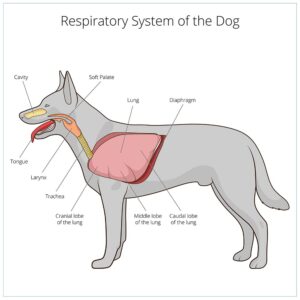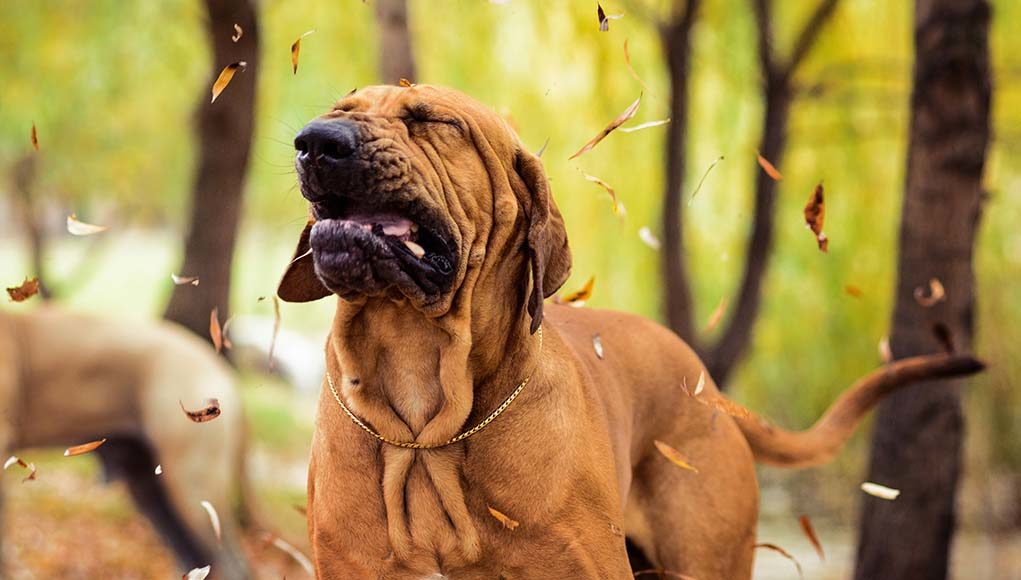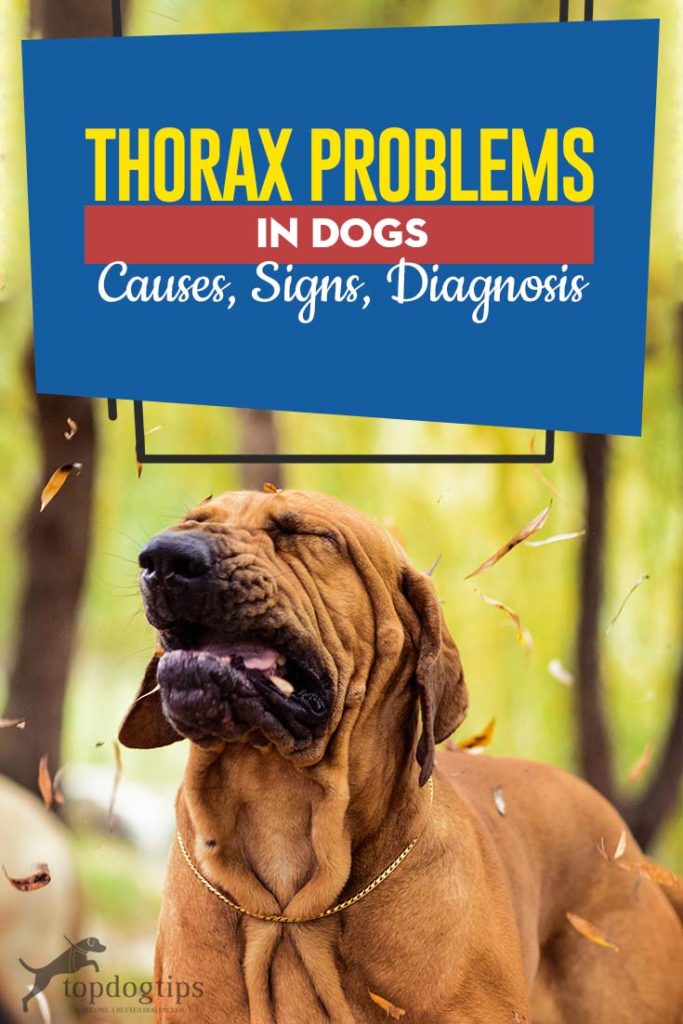A dog’s thorax is the region between the neck and the abdomen. This includes the rib cavity, breastbone and the organs responsible for circulation and respiration. Thorax problems in dogs generally show themselves as an airway or lung disorder.
Causes of Thorax Problems in Dogs
Coming into contact with a virus, fungus, bacteria, or parasites are the four most common causes. There is also a chance of immune system reactions because of toxic substances, overcrowding (such as in a kennel), trauma, and ongoing stress.
 Some canines are born with abnormalities that make them more susceptible to thorax problems. These include:
Some canines are born with abnormalities that make them more susceptible to thorax problems. These include:
- Cleft palate
- Elongated soft palate
- Narrow trachea or nostrils
A vet may catch these in their initial examination of a puppy, and advise safeguarding your pup based on those deformities. Likewise, an older rescue dog’s examination can reveal these issues and a vet will give you a heads-up in terms of care.
Signs of Thorax Disorders in Dogs
If your dog exhibits any of these symptoms, they may have a thorax disorder:
- Dry cough, or a cough with mucus or blood.
- Nasal discharge in the form of blood, mucus or pus.
- Rapid breathing that did not manifest from exercise or play.
- Shallow breathing, sometimes accompanied by pain or grunting sounds.
- Shortness of breath even when doing simple movements.
No matter what the exact cause, however, get your pooch to see a veterinarian.
Diagnosis of Thorax Problems in Dogs
When your vet suspects lung, airway or breathing disorders in your dog, the first step is usually chest and neck x-rays to see if there is any obstruction visible. If your dog has a persistent cough or labored breathing, don’t be surprised that an x-ray gets ordered, coupled with an oxygen level reading.
Additionally, your vet may use a scope to get up-close view of your dog’s airways, nose, and throat. Should a concern over bacterial lung issues arise, the vet may also take a blood test, or a needle aspiration (most useful when fungus may be the culprit). This reveals a specific bacteria in the dog's system. This analysis can show what else may be in the mix, including a dog's allergy that has never presented itself previously.
Three Common Thorax Diagnoses in Dogs
There are three diagnoses that come up repeatedly with thorax problems in dogs:
1. Pleural Effusion
This is a buildup of fluid in the chest region known as the pleural cavity. This fluid puts pressure on a dog's lungs, making normal breathing labored. In this case, either the dog’s body produces too much fluid or the pleural cavity can’t absorb enough fluid.
Pleural Effusion in dogs manifests itself slowly. At first, the behaviors aren’t worrisome, like mild lethargy and restlessness. Over time, indications increase to where the dog coughs, pants excessively, shows anxiety, has blueish gums and avoids exercise.
Causes of Pleural Effusion in dogs vary depending on the exact type:
- Chylothorax Effusion emanates from cancer, blood clots, or congenital defects.
- Hemothorax Effusion may begin with tumors or injuries.
- Pyothorax Effusion can stem from parasites, heartworm, pancreatitis, or lupus.
- Hydrothorax Effusion may begin with kidney or intestinal disease, heart failure, and malnutrition.
Treatments for your dog in this situation may include oxygen therapy, draining the fluid from the chest cavity, an IV if your dog is dehydrated, and antibiotics.
2. Chylothorax
This is a buildup of lymph fluids with a high quantity of fat. This means your dog’s lungs cannot expand normally, limiting oxygen intake. Causes of chylothorax in dogs aren’t readily known. Chylothorax appears more in dogs with blood clots and in certain breeds like an Afghan Hound.
The symptoms will include listlessness, lack of appetite, and coughing. This is a very serious condition. The fluid in the chest cavity must be removed before a vet can figure out any underlying causes. If none can be found, your dog may have to go on a low-fat diet and periodically have the fluid buildup removed.
3. Spontaneous Pneumothorax
This is a condition where air enters the chest cavity with no apparent cause. When the pressure in a dog's lungs cannot be maintained properly, the lung collapses. Upon examination, the vet may find injured tracheal tissue or esophageal perforation as the crux of the problem.
Secondary causes include bacterial pneumonia and a pulmonary abscess.
Spontaneous Pneumothorax in dogs shows up predominantly in deep-chested breeds like the Siberian Husky. The symptoms are similar to Chylothorax with the addition of an over-inflated chest.
Prevention and Control of Thorax Problems in Dogs
With some thorax conditions, you will have no control over them. There are, however, some simple things you can do to prevent or limit potential thorax problems in dogs.
Don’t change your dog’s diet suddenly. Wean them off one food and onto another a little at a time. Set up your dog’s space away from cold, damp, and drafty places, and keep them warm in winter. Make sure your dog’s crate or bed has good ventilation away from harsh chemical smells.
If you must put your dog into doggy daycare, be aware of the risks, and make sure that the service provider doesn’t mix the age groups of the dogs. The animals should never be crowded, and any dogs with symptoms of sickness must be separated from the rest.
READ NEXT: Breathing Problems in Dogs – How to Spot Them and What to Do














